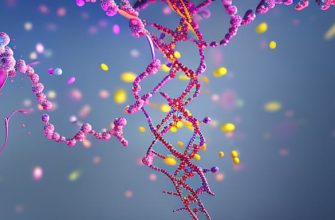Introduction to Advanced Carbon Capture and Storage Technologies
Climate change is a major global issue, and we must act quickly to slow down its destructive effects. We pump tons of greenhouse gases, like carbon dioxide (CO2), into the atmosphere daily.
These gases trap heat, causing the Earth’s temperature to rise. That’s where carbon capture and storage (CCS) comes in. It’s a technology that could play a crucial role in reducing these harmful emissions.
CCS is a process that involves capturing CO2 from large emission sources, such as power plants or factories, and storing it somewhere safe, like deep underground. This prevents CO2 from entering the atmosphere and contributing to climate change.
Stick with us as we explore the ins and outs of advanced CCS technologies, their benefits, drawbacks, and how they can help save the planet.
A Brief History of Carbon Capture and Storage
Early concepts and research
The idea of capturing and storing CO2 has been around for a while. In the 1970s, scientists started researching ways to reduce greenhouse gas emissions.
Early concepts focused on capturing CO2 from the atmosphere and using it to enhance oil recovery. As climate change became more pressing, the focus shifted to carbon capture and storage as a potential solution.
The development of modern CCS technologies
By the 1990s, researchers explored new methods to capture CO2 from large emission sources. Governments and private companies began investing in CCS technology, and pilot projects started popping up worldwide. As the technology matured, CCS became a more viable option for mitigating climate change.
Types of Advanced Carbon Capture Technologies
Post-combustion capture
Post-combustion capture is the most common method of capturing CO2. It involves using chemicals called amines to separate CO2 from other gases after burning the fuel. The captured CO2 can then be compressed and stored.
The advantage of this method is that it can be retrofitted to existing power plants and factories. However, it requires a lot of energy to separate the CO2, which can be a drawback.
Pre-combustion capture
In pre-combustion capture, CO2 is removed before the fuel is burned. This method involves converting the fuel into a mixture of hydrogen and carbon dioxide, called syngas. The CO2 is then separated from the hydrogen, which can be used as a clean fuel source.
Pre-combustion capture is more energy-efficient than post-combustion capture, but it requires significant modifications to existing power plants or factories. This can make it a more expensive option.
Oxy-fuel combustion capture
Oxy-fuel combustion capture is when fuel is burned in pure oxygen instead of air. This results in a high concentration of CO2 in the exhaust gases, making it easier to separate and capture. The captured CO2 can then be compressed and stored.
While this method offers a high capture rate, it requires significant modifications to existing power plants or factories and consumes a large amount of oxygen, which can be costly.
Direct air capture
Direct air capture (DAC) is a cutting-edge technology that removes CO2 directly from the atmosphere. DAC systems use chemicals to bind with CO2, which is then released and captured when the chemicals are heated.
DAC is an exciting option because it can capture CO2 from dispersed sources, like transportation and agriculture. However, it’s still a relatively new and expensive technology, and its large-scale deployment remains challenging.
Carbon Storage Techniques
Geological storage
Geological storage is the most common method of storing captured CO2. It involves injecting the CO2 underground into porous rock formations, like depleted oil and gas reservoirs or deep saline aquifers. These formations provide a secure, long-term storage solution for CO2.
One advantage of geological storage is that it can use existing infrastructure, like old oil and gas wells. However, careful monitoring is required to ensure the CO2 doesn’t leak back into the atmosphere.
Ocean storage
Ocean storage involves injecting captured CO2 deep into the ocean, where it dissolves and forms stable compounds. This method can store large amounts of CO2, but there are concerns about its impact on marine ecosystems and the potential for CO2 leakage.
Mineral carbonation
Mineral carbonation is a process that turns captured CO2 into stable, solid minerals like calcium or magnesium carbonate. These minerals can be stored indefinitely without the risk of leakage.
While mineral carbonation offers a secure storage option, the process is still in its early stages of development and is not yet widely used.
The Benefits and Drawbacks of CCS
Positive effects on the environment
Carbon capture and storage can play a significant role in reducing greenhouse gas emissions and mitigating climate change. By capturing and storing CO2, we can prevent it from entering the atmosphere and contributing to global warming. This can help us meet international climate goals and protect our planet for future generations.
Economic advantage and job creation
Investing in CCS technology can create new jobs and stimulate economic growth. As the demand for CCS increases, industries can develop new expertise and technologies, making them more competitive globally.
Potential risks and challenges
There are some potential risks and challenges associated with CCS. These include the possibility of CO2 leakage, which could negate the climate benefits of CCS, and concerns about the long-term stability of storage sites. However, ongoing research and strict regulations are in place to minimize these risks.
Addressing the criticisms
Some critics argue that investing in carbon capture and storage distracts from the need to transition to renewable energy sources. While it’s true that we need to shift towards cleaner energy, CCS can still play a crucial role in reducing emissions from hard-to-decarbonize sectors, like heavy industry and aviation.
FAQ: Frequently Asked Questions About CCS
Q: Is CCS a proven technology?
A: Yes, CCS has been successfully implemented in several projects worldwide, demonstrating its potential to reduce greenhouse gas emissions. However, ongoing research and development are needed to improve its efficiency and cost-effectiveness further.
Q: How much CO2 can be captured and stored using CCS?
A: The amount of CO2 captured and stored using CCS depends on the specific technology and storage method used. CCS technologies can generally capture up to 90% of CO2 emissions from large sources, like power plants and factories.
Q: Is CCS expensive?
A: The cost of implementing carbon capture and storage varies depending on the specific technology and project. While initial investments can be high, the long-term benefits of reducing greenhouse gas emissions and mitigating climate change can outweigh these costs. Additionally, ongoing research and development aim to lower the costs of CCS technologies.
Q: Are there any negative environmental impacts of CCS?
A: There are potential risks associated with CCS, such as CO2 leakage and impacts on local ecosystems. However, strict regulations and monitoring systems are in place to minimize these risks and ensure CCS’s safe and effective deployment.
Conclusion: The Future of CCS and its Role in Climate Change Mitigation
CCS is a promising technology that can help us combat climate change by capturing and storing CO2 emissions. As we continue to develop and refine this technology, investing in research, infrastructure, and regulatory frameworks is essential to support its widespread adoption.
By embracing advanced carbon capture and storage technologies, we can take a significant step towards a cleaner, more sustainable future for our planet.








